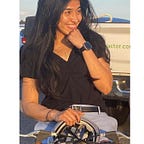From Stanislavski’s realism, Meyerhold’s biomechanics to Lecoq’s neutral mask and Brecht’s double agency, we established a basis to better understand acting theories, its origins, its techniques, and methods and now, devising how it can translate to the silver screen (film). Initially, I found it challenging to find similarities between theatrical acting and film acting. Stories told on stage require large expressions, often emphasizing dialogue and emotions. The scattered seats, real-time performance, specific dimensions of a stage, all influence the actor’s creative choices. Alternately, film acting demands a different metaphysical immersion of its own. Although both theater and film directors pay an equal amount of attention to their productions, film actors are expected to understand their characters on a deeper level. Unlike theatrical productions, movies are shot out of order, attending to logistical standpoints, and rarely filmed chronologically. Consequently, I think Stanislavski, Strasberg, Meinser and Grotowski acting theories prove most useful for my future filmmaking endeavors.
Stanislavsky birthed realism for acting. Living throughout the early 1900s, his methods pertain to theatrics, often idealizing on forming “the creative experience.” Francis Ford Coppola later brought this idea into light when working with actors on set. He understood the emotional toll actors felt on set. Unlike theatrical actors who perform in one go, directors expect film actors to deliver identical performances take after take. Therefore, like when a break is called for gaffers to fix bulbs, directors should make the same call for actors to take emotional breaks.
The paradox of the actor — Lee Strasberg. One of my favorite films, Nightcrawler, an obsessive journalist power hungry for status and accolades, stars Jake Gyllenhaal. When asked how he prepared for his role, Gyllenhaal admits to drawing techniques from Strasberg. Specifically, the animal technique. He associated his character with an animal and channeled a hungry coyote. Moving forward, since I am interested in writing about off-beat, obsessive characters like that from Whiplash and Black Swan, Strasberg’s method to attach character traits to animalistic features serves as a convincing argument.
Along with Grotowski and Strasberg’s methods, I’ll apply Meinser’s repetition exercise in my filmmaking endeavors. The repetition exercise pushes an actor’s creativity to reinterpret lines. In doing so, the actor understands what sounds natural, unusual or might even inspire them to add more of a personal spin if permitted. Personally, I think if an actor were to take my script, change the annunciation, and thereby reinterpret dialogue I initially felt insecure about, I think the Meinser technique would aid in delivering clarity.
Mr. Grotowski, a well-traveled Polish teacher, drew an outline for physical score, via negative, Plastiques but most importantly highlighted the importance of shamelessness. Acting is an incredibly vulnerable craft that demands actors to embrace their character. A lot of the characters I write about now present themselves as emotionally mature people who struggle with their inner self. Grotowski’s techniques link the body and mind as one, encouraging the actor to collaborate with a group, suggesting a list of ethics and techniques as opposed to a fixed method. And so, looking to Grotowski for techniques such as Plastiques, that require the actor to connect with a memory, will help me better understand working with an emotionally mature actor versus one that may be initially reserved.
